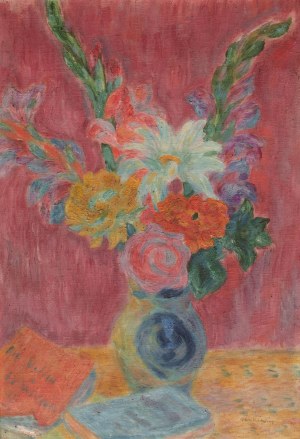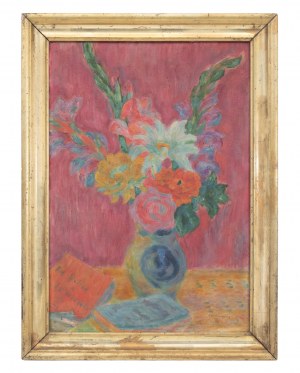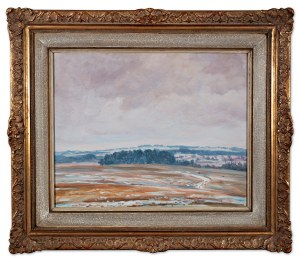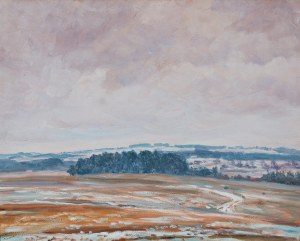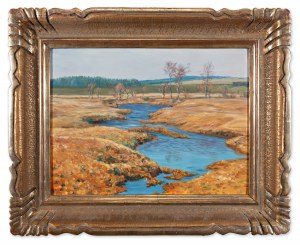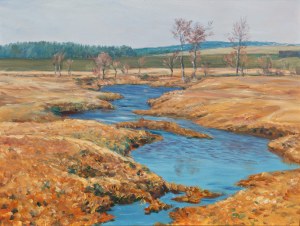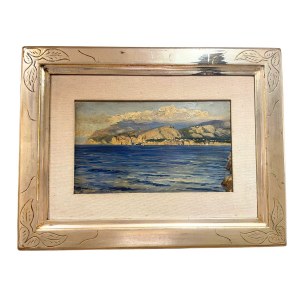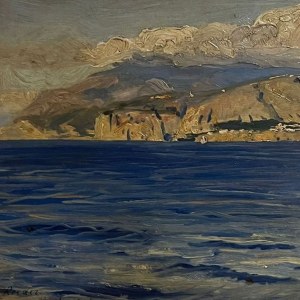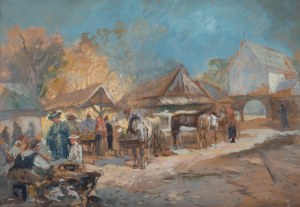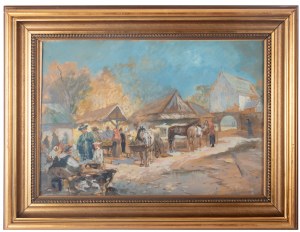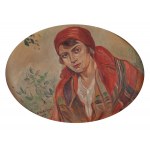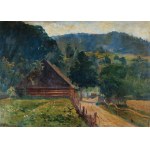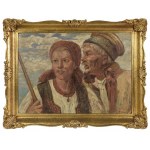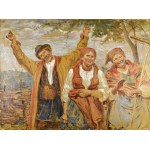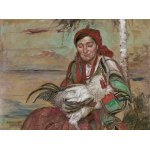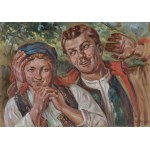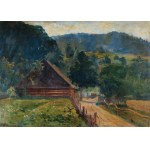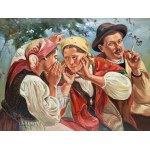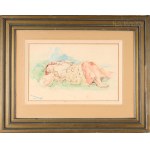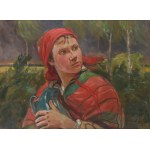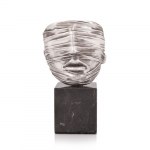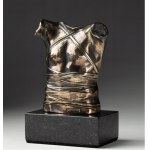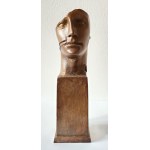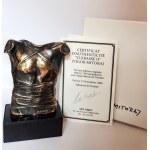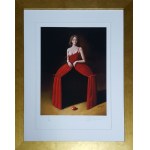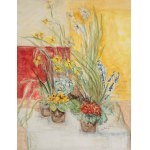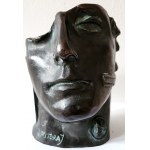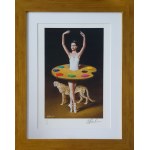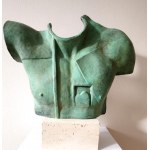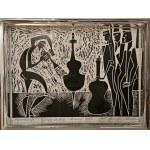oil, canvas, 164 × 240 cm
Signed and dated p. d.: "W. Wodzinowski/1902"
Provenance:
- Collection of Count Ignacy Korwin Milewski,
- Collection of the artist's daughter Wincentyna Wodzinowska-Stopkowa,
- Collection of the family of a friend of Wincentyna Wodzinowska-Stopkowa
"The series of folk paintings by our artist, collected almost in its entirety in Count Milewski's gallery, is not only an important painting contribution, but directly a chapter in the history of Polish folk painting in the latest era of Polish painting. Hidden away in a private gallery, guarded from the eyes of the curious, they will only become accessible to the public when the owner of this collection makes a gift of them to one of the national galleries in the country."
Wladyslaw Prokesch, "Wincenty Wodzinowski," Krakow 1911, p. 13.
Between 1892 and 1907 Wincenty Wodzinowski painted primarily on commission from Ignacy Korwin Milewski (1846-1926), a great collector and friend of artists, whose collection included works by some of the most outstanding Polish artists, such as Aleksander Gierymski, Józef Chełmoński, Alfred Wierusz -Kowalski, Leon Wyczółkowski, Władysław Zachorski. The moment when the artist began his cooperation with the great patron of the arts is described by Wincentyna Wodzinowska, the artist's daughter, as follows: "A few years after his marriage to Miss Gryglewska, a patron appeared in my father's life - as one would now say. He was a hugely wealthy man, Count Milewski. He was building an art gallery on an island in Italy and collecting paintings for it. He probably bought the most from my father. And since this was the period of my father's great vitality, the time of his youth, when he painted boldly and brilliantly, many of his canvases passed into the ownership of the mysterious count. (...) the period when this rich man acquired my father's paintings is the happiest time in my parents' lives. They buy a small landed estate, put up a romantic manor house in the orchard (...). (Wincentyna Wodzinowska-Stopkowa "Portrait of the Artist with his Wife in the Background," Krakow 1989, p. 154.)
The aforementioned small estate was the Gibkówka manor house, located in the village of Swoszowice near Krakow, where the artist's painting studio took place. It was there that Wodzinowski, fascinated by the folklore of the Krakow suburbs, invited local peasants to paint them in folk costumes. It was during this period that Wodzinowski created his most important works, mostly in large formats, which later found their way to Milewski's gallery on Santa Catarina Island, and they were: "Funeral in the Countryside," "Harvesters' Rest," "The Wedding Goes," "Abandoned," "A Woman Dragging a Drunken Husband," and the painting "Sale of a Forest" presented at auction. (Beata Pranke, "Nurt chłopomanii w twórczości Stanisława Radziejowskiego, Ludwika Stasiak, Włodzimierz Tetmajera, Wincentego Wodzinowskiego i Kacper Żelechowskiego", Warsaw 2003, p. 26.)
"Sale of a Forest" is one of the most dramatic depictions of events in the life of peasants in Wodzinowski's work. The tragedy of the situation, solidifying the peasants into a common cannon, is particularly noticeable in the painting. Peasants on their knees begging to stop the sale of the forest are shown together with their families (a woman holding an infant in her arms and children standing in a petitioning gesture). In addition - the scene takes place in the disputed forest, where work is still going on in the remote parts (the diagonal perspective, as it were, "draws" the viewer into the distant parts of the painting). The figure of the owner, in a dark coat, and the distant Jew were contrasted with a group of peasants in modest clothing. The artist's support for the peasants in the painted scene is all too obvious. In this painting, the artist shows another dimension of peasantry. What's more, in contrast to the shallow yet common in the Young Poland period of seeing peasant culture as a source of primordial strength and the ideal of living in accordance with the laws of nature, the artist recognized and visualized the problems of peasants, their hard work and difficult living conditions. Analogous to Władysław Reymont's novel "The Peasants," Wincenty Wodzinowski in "Sale of a Forest" showed the real situation of peasants at the turn of the 19th and 20th centuries. The analogous timing of the painting and the publication of "Peasants" in episodes in "Tygodnik Ilustrowanym" (1902), reveals the new realism of peasantry in both literature and painting, occurring in the same period.
Recently viewed
Please log in to see lots list
Favourites
Please log in to see lots list











